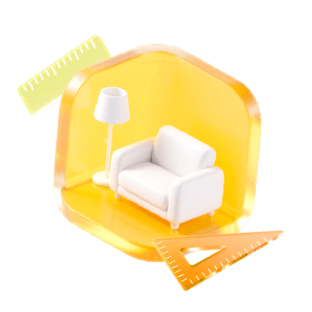In the fields of interior design and architecture, building elevation renderings are essential elements. They offer a visual depiction of a structure's exterior, enabling both designers and their clients to visualize the end result. In compact areas where every detail is crucial, perfecting these rendering techniques can have a substantial influence on the effectiveness of your design presentations.
The Importance of Building Elevation Renderings
Building elevation renderings illustrate two-dimensional views of a building's facades, typically showcasing the front, sides, and rear. They are vital in communicating the overall aesthetic and architectural style, particularly important for designs in small spaces where visual impact is key.
1. **Enhanced Visual Clarity**: Elevations clarify the design concept, facilitating clients' understanding of your creative vision.
2. **Design Validation**: They provide an opportunity to identify potential design flaws early in the process, prior to construction.
3. **Visual Appeal**: A well-crafted elevation can underscore the charm of a small space, making it more appealing to potential buyers or tenants.
Techniques for Effective Building Elevation Rendering
To create captivating building elevation renderings, various techniques and tools must be leveraged. Here are some strategies to refine your rendering skills:
Invest in high-quality rendering software, as it can greatly elevate your final output. Look for programs that provide functionalities such as:
When working in confined spaces, it’s crucial to factor in the surrounding environment. Incorporate elements like:
Attention to detail is critical for small spaces. Focus on:
Common Mistakes to Steer Clear Of
Even seasoned designers can encounter common traps when producing building elevation renderings:
Ensure that all components in your rendering are accurately scaled. Misrepresentation might cause design complications in the future.
Neglecting the building’s context can lead to designs that are incompatible with their surroundings.
Always solicit feedback from clients or colleagues. Their insights can greatly enhance the quality of your renderings.
FAQ
Q: What software is recommended for building elevation rendering?A: Widely used options include SketchUp, AutoCAD, and Revit, all providing a variety of features for 3D modeling and rendering.
Q: How can I elevate my rendering abilities?A: Engage in regular practice, explore tutorials, and gather critiques on your work from fellow designers.
Q: What makes building elevation renderings significant in small space design?A: They aid in clearly visualizing the project, ensuring design fidelity and enhancing visual appeal, which are critical in smaller environments. You might also consider integrating tools like Homestyler for added insight.
Welcome to the premier software for home design, known as Homestyler.

























































